
You can fire up your abs and sculpt muscle without gym equipment like dumbbells or kettlebells — just use a yoga block. If you've become bored with the many well-known bodyweight ab exercises, here are five ways to get creative with one $10 yoga accessory instead.
Yoga blocks are typically used during yoga classes to support your limbs. They can help bridge the gap between you and the floor if you have limited mobility or flexibility, or can be used to increase activation and make an exercise feel more challenging.
Coming into the holiday season, you might not have access to the gym or weights, so why not pick up a block and try these five ab exercises instead? Along with the five core moves, we’ve also curated a quick 15-minute five-move ab workout for you to try from your yoga mat.
5 ab exercises you can do with a yoga block to sculpt and strengthen muscles
Grab a yoga block and one of the best yoga mats for home workouts and try these. If you don’t have access to a block, you could use a firm cushion or a book instead. As with all ab exercises, remember to keep your stomach braced and maintain a neutral spine while you exercise.
When working from the yoga mat with your back supported on the ground, press your lower back gently into the mat to maintain neutrality. To do this, slightly tilt your pelvis toward your spine and press your back down. At no point should you feel like your lower back is taking the strain.
1. Yoga block oblique crunches
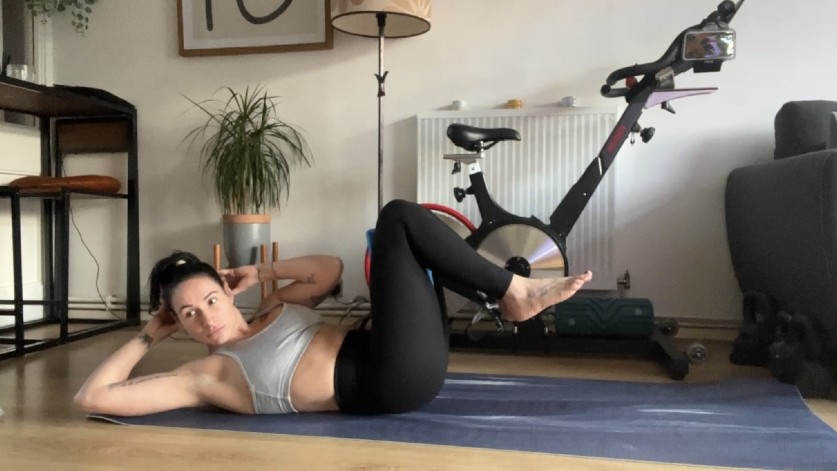
This variation on ab crunches targets the obliques and abs and engages your chest, upper back and shoulders to hold your position off the mat. It also increases inner thigh activation as you press against the block.
- Start on your back and place a block on the narrowest setting between your thighs.
- Give the block a healthy squeeze and engage your core, then lift your legs to 90 degrees with your knees bent.
- Place your hands behind your head and pull your elbows back to open your chest, then lift your upper back away from the mat.
- Begin the crunches by tapping your right elbow to the outside of your left knee, moving back to the center, and then tapping your left elbow to your right knee.
- Continue without dropping your back.
2. Yoga block single-leg kickouts
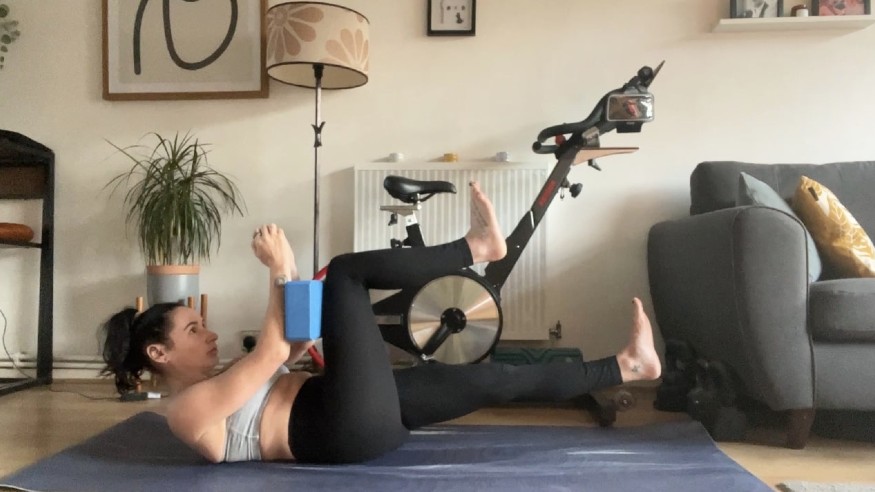
This is a solid option for targeting your lower abs and the deeper belt of core muscles known as the transverse abdominis. The hip flexors and legs are also active, and the block position will help work your upper body isometrically (without moving), including your arms, shoulders and chest, using the pressing motion similar to a plank.
Get instant access to breaking news, the hottest reviews, great deals and helpful tips.
- Start on your back and lift your legs to 90 degrees with your knees bent.
- Place your yoga block lengthways onto your left thigh. Engage your core, lift your upper back and press both elbows against the block.
- Holding this position, kick and extend your right leg away from you as low as you can without losing form.
- Slowly draw your leg back in for one rep. Complete reps, then switch sides.
3. Yoga block leg raises
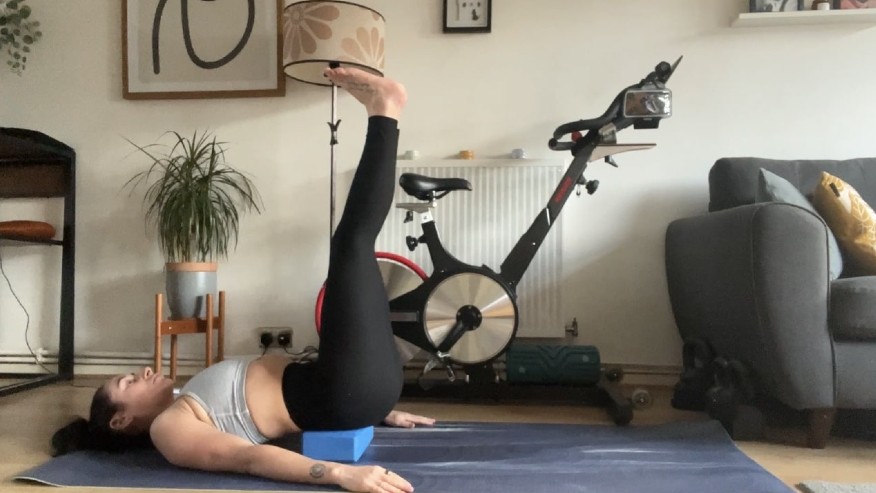
This is a killer move for the hip flexors, legs, abs (including the lower abs) and lower back. Done properly, it shouldn’t cause aggravation to your back, but if you struggle to maintain form, bend your knees. The block raises your hips off the mat, creating a deficit, which requires your legs to work through a greater range of motion than performing the leg raises with your bum against the ground.
Remember to press your lower back into the block without lifting your upper back away from the ground. Alternate legs if you prefer.
- Start on your back and rest the block lengthways on the lowest setting beneath your lower back, sitting at the top of your glutes.
- Raise both legs into the air, extend your legs and brace your stomach.
- Slowly lower both legs toward the floor as far as you can without arching your back, then drive your legs toward the ceiling.
- Your hands can rest on either side of your legs or place them behind your head as a progression.
4. Yoga block V-ups
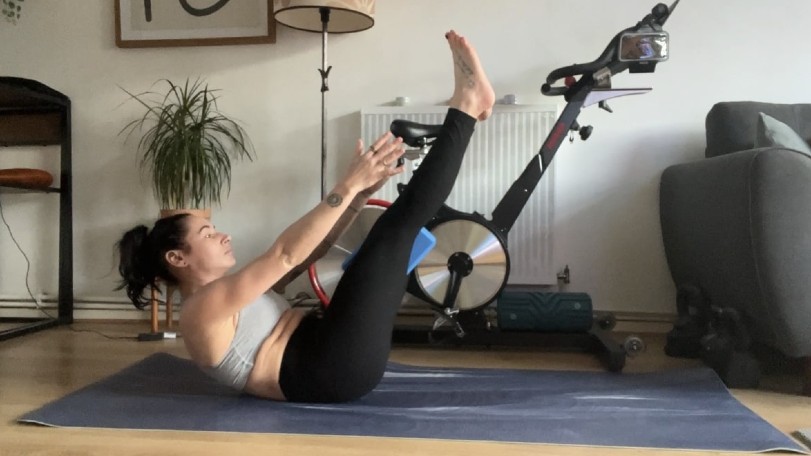
V-ups for high reps are killer, and the advanced sit-up variation takes practice to perfect. The move recruits core and lower body muscles, including the abs, obliques, hip flexors, adductors and quads, improving core stability, balance and coordination.
Start with your legs extended. If you struggle to keep form, scale back by bending your knees as you lift your legs, drawing both knees toward you as your arms reach overhead. Instructors will teach differently — some advise starting each rep with arms and legs on the floor, while others will advise keeping them hovering just above. We recommend slightly lifting your upper body before your legs to help drive momentum.
- Place the yoga block between your thighs on the narrowest setting and squeeze your legs together.
- Lay on your back with your arms reaching behind you and legs extended.
- Press your lower back into the mat and engage your stomach. As you breathe out, lift your upper and lower body off the mat together and draw your hands and feet to touch above your stomach.
- Pause, then lower back down for one rep.
5. Yoga block isometric ab holds
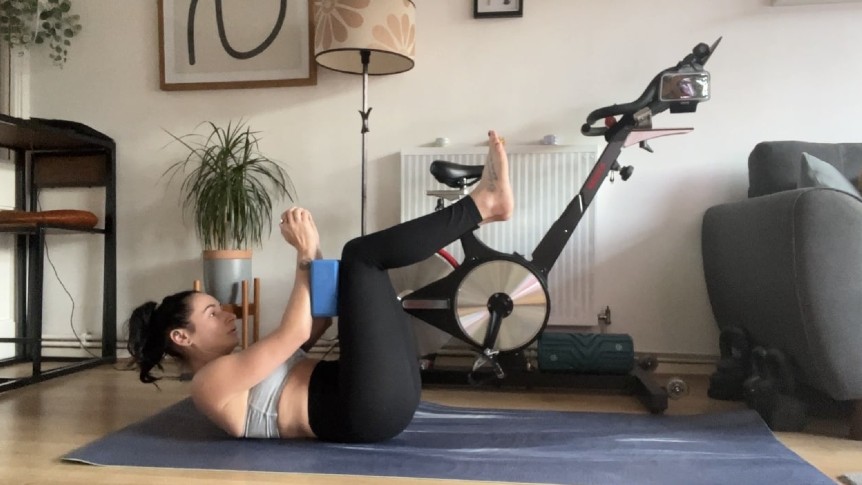
Isometric loading helps develop strength without moving muscles through a range of motion, which is low impact yet still challenging, especially during core workouts. This ab hold promotes full-body activation.
- Start on your back with your knees bent and your feet planted on the mat.
- Place the yoga block across your thighs, engage your core and press both hands against the block.
- Slightly lift your upper back off the mat, keeping your arms extended.
- Lift both legs to 90 degrees and keep pressing against the block as you push back using your thighs without moving.
- You can also try the ab hold using your elbows instead of your hands.
What is the 5-move yoga block ab workout?
Sometimes, it’s worth stripping back overcomplicated ab workouts and taking things back to a humble yoga block and powerful core activation. From time to time, it’s good to remember that you can apply subtlety to your training regime and still get results. Although it’s easier to default to heavy weights like a kettlebell or dumbbell, using your body weight can be equally challenging if you apply good form, a few tips for building muscle without lifting heavier weights and a small yoga accessory.
Creating resistance using your body weight means there’s nowhere to hide, forcing you to work on activating the correct muscle groups and keeping your form tight. The key to success is to move with control, slow exercises down and think about generating movement from bracing your stomach.
Here’s a 15-minute yoga block ab workout to try.
50 seconds on/ 10 seconds off x 3 rounds
- Oblique crunches
- Single leg kickouts
- Leg raises
- V-ups
- Ab hold
Perform each exercise for 50 seconds, resting 10 seconds between exercises. Complete 3 rounds. Alternate sides during oblique crunches and switch sides after 25 seconds during kickouts.
More from Tom's Guide
- I did the 3-minute frog exercise every day for a week, here's what happened
- I did a 5-minute plank every day for a week, here's what happened to my abs
- 9 kettlebell ab exercises to try right now

Sam Hopes is a level 3 qualified trainer, a level 2 Reiki practitioner and fitness editor at Tom's Guide. She is also currently undertaking her Yoga For Athletes training course.
Sam has written for various fitness brands and websites over the years and has experience across brands at Future, such as Live Science, Fit&Well, Coach, and T3.
Having coached at fitness studios like F45 and Virgin Active and personal trained, Sam now primarily teaches outdoor bootcamps, bodyweight, calisthenics and kettlebells.
She also coaches mobility and flexibility classes several times a week and believes that true strength comes from a holistic approach to training your body.
Sam has completed two mixed doubles Hyrox competitions in London and the Netherlands and finished her first doubles attempt in 1:11.
